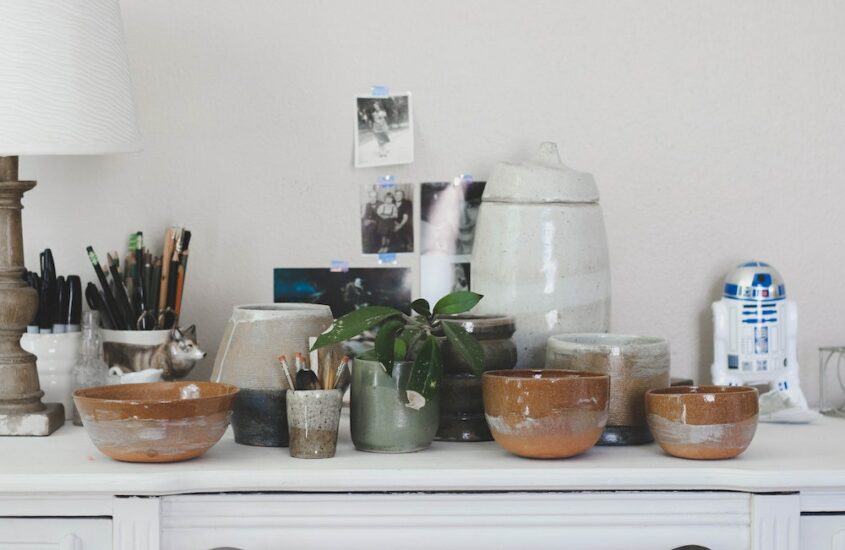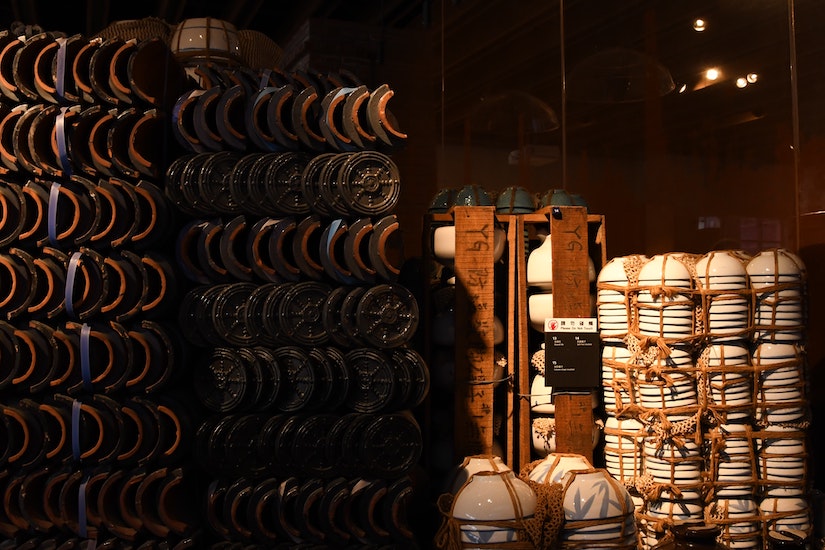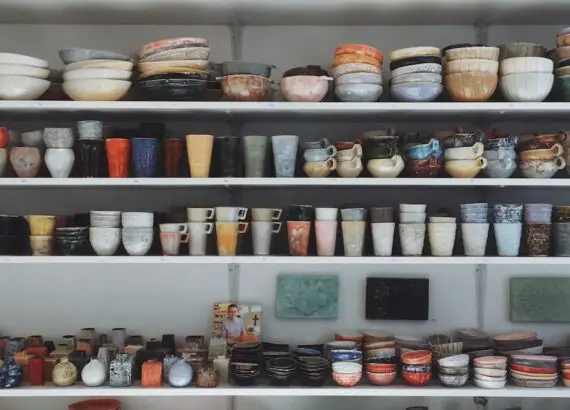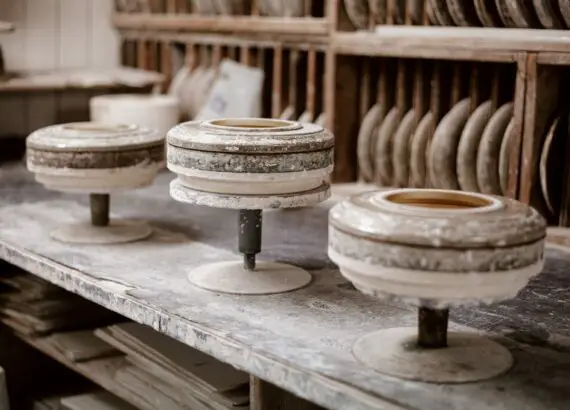Is Pottery Biodegradable? How Long Does It Take Pottery To Decompose?

Humans have been curious if pottery was biodegradable, seeing that it is made from natural elements. One would expect the answer to this to be no, but quite surprisingly and scientifically proven the answer to this is yes.
Though clay is the major material used in pottery, this doesn’t stop it from decomposing. It only takes a longer time; it could be up to a million years. This is due to the way pottery is made in modern times.
Table of Contents
Why Glazed Pottery Takes Ages to Biodegrade?
Glaze pottery which can be called ceramics, takes a really long time to biodegrade. As mentioned earlier, it could take a million years to biodegrade. This sounds a bit far-fetched.
However, to understand how this seeming impossibility is possible, it is cogent to consider making glazed pottery. For in it, we would find the secret of its delayed biodegradation.
The glaze is an impervious layer of vitreous substances that has been fused to a ceramic body through firing. Glazing pottery makes it possible to decorate, color and allows earthenware vessels to hold liquid.

When the potter is done forming the pottery with clay, the clay is made to pass through the fire. In this process of firing, a property in the clay known as silica melts and changes alongside others. These become viscous, and in turn, the water particles turn into crystals when the clay is cooled.
After cooling, the clay becomes dry and as firm as stone.
This clay which is the product of decomposing igneous rock by firing this clay, reverts to its original state. And just like stone, it will take a long time to decompose. This is because glazing makes it difficult for biodegradation agents such as fungi and yeast to penetrate the particles of potteries.
Humans also play a role in the delayed biodegradation of glazed potteries: as with other valued items, glazed pottery is kept indoors away from the sun, cleaned and polished. This helps to preserve these potteries.
Does Clay Decompose?
Asking if clay decomposes is ironic because clay itself is a decomposed state of igneous rock. However, it is a different case if one is talking about clay that has gone through the process of glazing. If then this is the case, then yes, clay does decompose.
But this takes a long time to happen. The passing through the fire of the clay gives it the quality of an undecomposed igneous rock.
How Fast Do Things Decompose?
The speed with which items decompose varies from item to item. The reason for this is the different properties that they contain.
Other significant factors contributing to the decomposition of items are temperature, moisture, exposure to sunlight, presence, or microorganisms. Here are some:
| Vegetables | 5 days- 1 month |
| Paper | 2-5months |
| Cotton shirt | 6 months |
| Orange peels | 6 months |
| Tree leaves | 1 year |
| Wool socks | 1-5 years |
| Leather shoes | 25-40 years |
| Monofilament fishing line | 600 years |
| Plastic bags | 10-1000 years |
| Formed plastic cups | 50 years |
| Wet wipes | 100 years |
| 6 pack holders | 450 years |
| Tin | 50 year |
| Tires | 2000 years |
| Nylon fishing nets | 40 years |
| Nylon fabric | 30-40 years |
| Glass bottles | 1 million years |
| Styrofoam cup | 500 years to forever |
| Plastic bags | 500 years to forever |
See our infographics at the end of the post ‘How long does it take for garbage to decompose?’
Is Pottery Eco-Friendly?
For anything to pass as eco-friendly, it has to conserve natural resources and protect the planet from exploitation. Having seen this, can it then be said that pottery is eco-friendly? The truth is that pottery does not hit the 100 percent check of eco-friendliness.
Though pottery compared to glass production is eco-friendlier, it, however, on its own, falls short of some principles. For one, a lot of energy is required to fire pottery in the kiln, and glazed pottery needs to be fired twice. And this consumes a lot of fuel.
Also, this energy consumption leads to the emission of fumes and gases that pollute the atmosphere. And these are in no way, healthy to the ecosystem.
Do Ceramic Degrade?
Most items degrade, so do ceramics too. The degradation of ceramics can either be physical or chemical. The biological degradation of ceramics comes from manhandling. Ceramics are fragile and can lead to its damage.
There can also be a fault at production that can lead to the degradation of ceramics. For example, if a ceramic handle is too small for its weight, this can result in the ceramic falling to its destruction when handled.
The temperature of the atmosphere can also lead to the degradation of ceramics. Frost is one of the top-ranking enemies of ceramics.
When exposed to frost, ice crystals form inside the pores of the ceramics piece. This frost inside will exert pressure on the upper layer of the ceramic and cause it to crack.
What Is Best for The Environment? Glass or Ceramics?
Deciding between glass and ceramics, which is better for the environment, is tricky. Both major production materials are natural.
For glass, sand is used, and for ceramics, clay is used. Their origination from natural elements gives both glass and ceramic bonus points in respect to being environmentally friendly.
However, on other extremes, glass and ceramic require a lot of heat for production, which isn’t healthy for the environment. Despite these close similarities between glass and ceramics, glass has an advantage to the environment that ceramic doesn’t.
And that is the possibility of being recycled. Recycling has become necessary in the new green earth, as it reduces the quantity of new production. This makes glass better than ceramics.
How Long Does Ceramics Last?
Properly made ceramics with enough heat can survive through millennials. And except it is smashed on the ground, the ceramics can see more than a few generations.
This makes them very good historical relics and family heirlooms.




